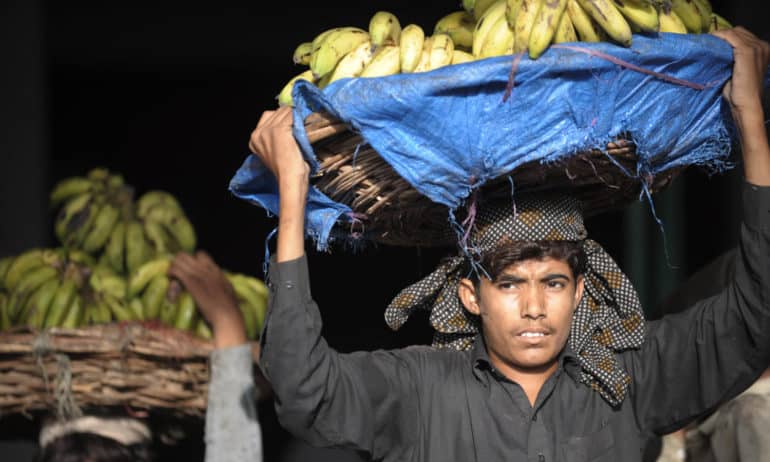Bananas are one of the world’s most popular fruits; not only are they widely consumed, but more than 400 million people’s livelihoods depend on them. Unfortunately, the Fusarium wilt disease, caused by a soil-borne fungal pathogen Fusarium oxysporum f.sp. cubense, poses a serious threat to bananas.
There are four races of the disease, and the one currently afflicting bananas is Tropical Race 4 (TR4). During the mid-20th century, Tropical Race 1 destroyed a significant portion of the Gros Michel banana population, which at the time was the most popular variety. In response, researchers developed the disease-resistant Cavendish banana, which is the most widely known and consumed banana type today.
The disease is particularly dangerous for various reasons. Eradication of the disease is currently impossible, and once it is established in the soil, it can remain for decades. Fusarium wilt disease can also cause up to 100 percent of yield loss in a field. It spreads through infected plant materials or spore-contaminated vehicles, irrigation water, clothing, and machinery. The most effective ways to contain this disease are management, prevention, and the development of alternative, disease-resistant banana varieties.
While developing new varieties is crucial to ensuring the survival of the banana trade, many of these varieties do not match consumer preferences—for example, the banana may be too sweet. Combating this disease will require expert and coordinated efforts, and the U.N. Food and Agriculture Organization (FAO) has compiled multiple Fusarium wilt disease resources on their website.
Every quarter, the FAO releases an early warning bulletin on transboundary threats, which includes banana Fusarium wilt disease. The bulletin forecasts the likelihood of a threat occurring over the next three months, containing precise information on the disease’s likelihood of spread and occurrence at the country level. According to the most recent bulletin, banana Fusarium wilt disease is found in many parts of South and South-East Asia and is likely to spread to other countries. It is also found in parts of the Middle East, Mozambique in Africa, and has recently been reported in Australia.
The FAO is spearheading the global program on banana Fusarium wilt disease; it is a collaborative endeavor with partners that include Bioversity International, the International Institute of Tropical Agriculture, and the World Banana Forum. The goal is to strengthen international efforts and harmonize existing national programs to prevent and manage the disease and its spread.
The program hopes to achieve three overarching outcomes: enhanced enabling environments and capacities for disease management, reduced spread of the disease, and improved integrated management of the disease at the field level. To do so, interventions include surveillance, increasing knowledge of plant biology, phytosanitary standards, and rapid response measures. The estimated cost is US$98 million for 32 projects over the next 5 years, targeting an initial 67 countries, according to the program summary.
The views expressed in this article are those of the author and do not necessarily reflect the views of the FAO.













